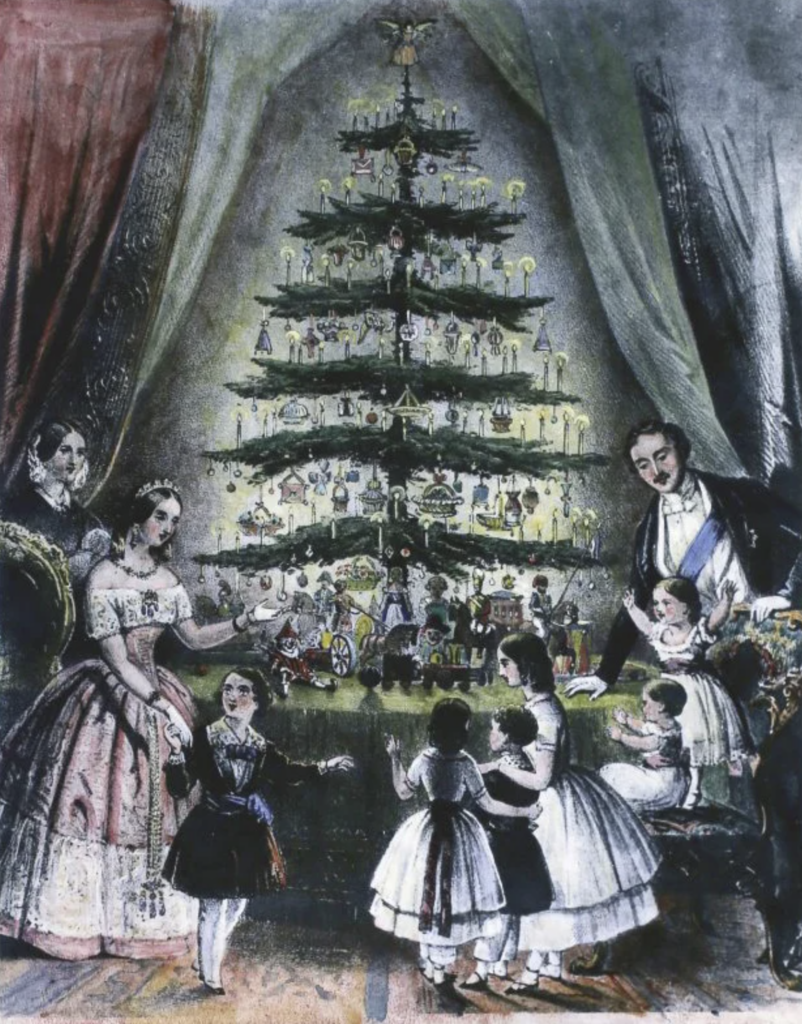The First Amendment and Christmas Displays
Guest blog by the Christian Law Association
Religious liberty is an important part of the heritage of the United States of America.

A Puritan rebuking children for picking holly during the holiday season. Hulton Archive/Getty Images
The British settlers in the thirteen original colonies remembered how the official religion of England had sometimes drastically changed after the coronation of a new monarch and how those who refused to comply with the new official church were jailed—and even martyred—for practicing their faith. As the Bill of Rights was written, lawmakers were careful to ensure that the government would not be able to force the citizens to be members of a state-controlled church, and religious liberty became part of the fabric of America.
Just as the story of America is complex and multi-faceted, Christmas, as we now know it, is a combination of many traditions. Christmas is so ancient that we will never know how its many customs were derived. For example, the Christmas tree became popular in England and America after Queen Victoria’s husband, Prince Albert, introduced the Paradise Tree to the palace— a common custom in his homeland of Germany. Other people note that evergreen trees were used in the ancient celebrations of the winter solstice.

Illustration of Queen Victoria and Prince Albert and their children gathered around their Christmas tree.
Getty Images
During the Christmas season, Christians focus on the birth of Christ. Others downplay the birth of Christ and focus on exchanging gifts and the friendly face of Santa Claus. The combination of all these items has created unique legal questions. For example, “If Christmas is a Christian holiday, can nativity scenes be displayed in town centers, or do such displays mean the government is officially supporting one religion over another?”
Christmas at Your Home or Business
Private citizens are allowed to celebrate Christmas’s religious aspects in their homes and businesses. No laws or court cases forbid citizens from celebrating a Christ-centered Christmas at home.
In Public Forums
Religious Christmas displays are perfectly legal if a public space has been made available to everyone. For example, if a city or village decides to allow Christmas displays in the community park, Christian displays must be allowed, just as secular displays must be allowed. The government cannot include one group as it excludes another.
In the case Grace C. Osediacz v. City of Cranston (2005), the court ruled that the city of Cranston, Rhode Island, had not violated the First Amendment by allowing both secular and religious Christmas displays on government-owned land that had been opened as a public forum.
In Capitol Square Review and Advisory Board v. Pinette, 515 U.S. 753 (1995), the United States Supreme Court clearly ruled in favor of allowing religious displays in public forums.
The court held:
Respondents’ religious display in Capitol Square was private expression. Our precedent establishes that private religious speech, far from being a First Amendment orphan, is as fully protected under the Free Speech Clause as secular private expression. Indeed, in Anglo-American history, at least, government suppression of speech has so commonly been directed precisely at religious speech that a free-speech clause without religion would be Hamlet without the prince. (Id. At 760 [internal citations omitted]).
This case makes clear that private citizens, indeed, are allowed to erect religious displays on public property if
- The property is a public forum where the government has permitted a wide variety of expressive conduct
- And there is a disclaimer sign to inform the public that the display is sponsored by a private citizen and is not being endorsed by the government.
Christmas Displays in Government Buildings
In the case of lynch v. Donnelly, 465 U.S. 668 (1984), the United States Supreme Court ruled that religious displays may indeed be part of Christmas displays on government property. However, these Christmas displays need to include both sacred and secular elements. This case created a legal idea sometimes humorously referred to as “The Three Reindeer Rule.” If there is a Christian manger scene, there might also need to be three reindeer from Santa’s Village. If there is a statue of Baby Jesus, there might also need to be a statue of Jolly Old St. Nick.
Knowing the Law
Many citizens do not realize that the Supreme Court has held that Christmas displays—even on government property—need to include a variety of Christmas themes. Still, the religious themes of Christmas have not been expelled from the public square. In some cases, citizens may need guidance from experienced attorneys who can help them navigate the complexity of these issues. However, Christians in the United States still enjoy the freedoms of the First Amendment.
Merry Christmas!

About the author
Since 1969, the Christian Law Association (CLA) has been providing free legal assistance to Bible-believing churches and Christians who are experiencing difficulty in practicing their religious faith because of governmental regulation, intrusion, or prohibition in one form or another.

